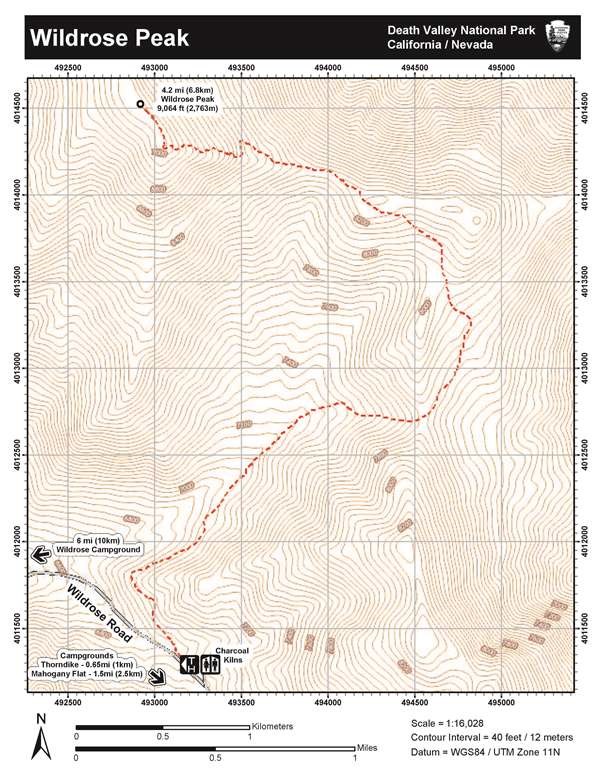
NPS - Dan Kish Time: 6 hours round trip. Difficulty: Difficult Elevation Gain: 2,200 ft (671m) Location: From CA-190 follow Emigrant Canyon Road past the Wildrose Campground to the parking area at the Charcoal Kilns. The final 2 miles is a maintained gravel surface typically passable in a sedan. 25 ft vehicle limit. Parking: 25 ft vehicle limit. Open gravel area. Closest Restroom: Vault toilet in parking area. No restroom along the trail, follow principle 3 of Leave No Trace (LNT). GPS Data: GPS data for the marked route is for supplemental purposes only. Take a map and compass when exploring the trail-less wilderness. 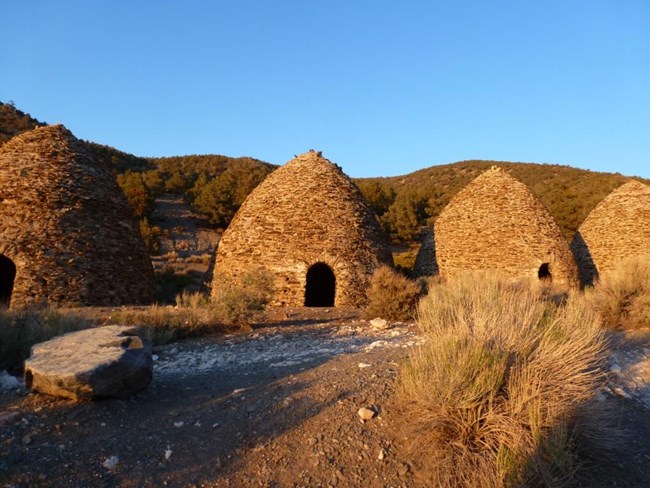
NPS - Dan Kish Route DescriptionWildrose Peak Trailhead is located at the historic Wildrose Charcoal Kilns. These ten beehive shaped structures were completed in 1877 by the Modock Consolidated Mining Company to provide a source of fuel suitable for use in two smelters adjacent to their group of lead-silver mines in the Argus Range west of Panamint Valley, about 25 miles distant from the kilns. Find the trailhead just north (left) of the kilns.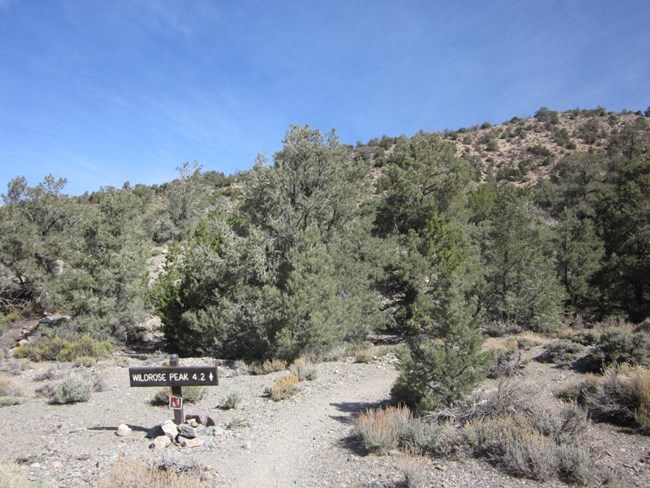
NPS - Dan Kish 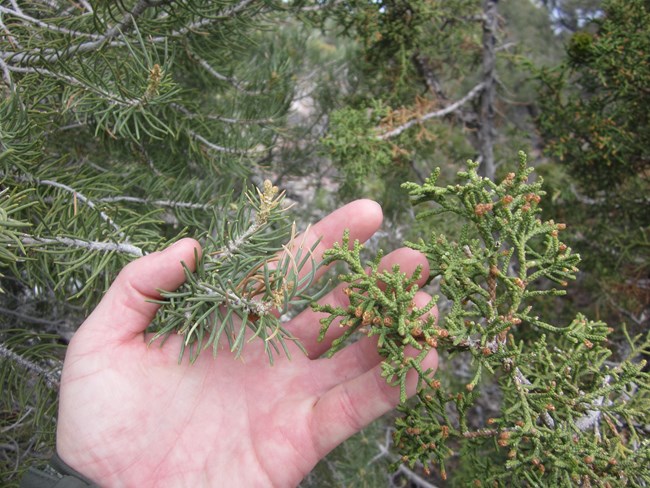
NPS - Dan kish Right = Juniper (Juniperus californicus) 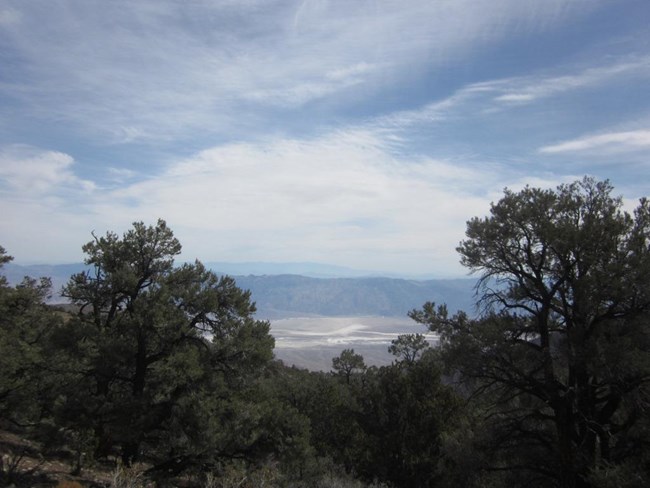
NPS - Dan Kish 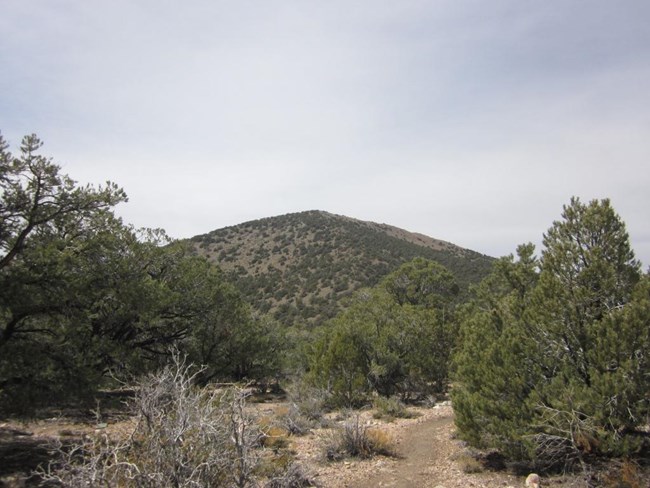
NPS - Dan Kish 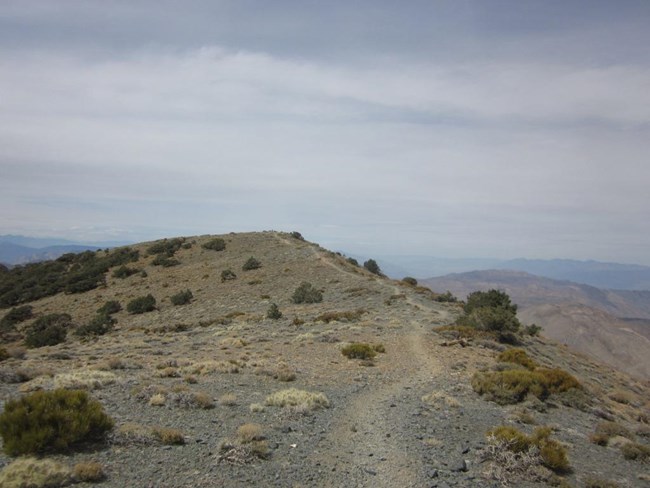
NPS - Dan Kish 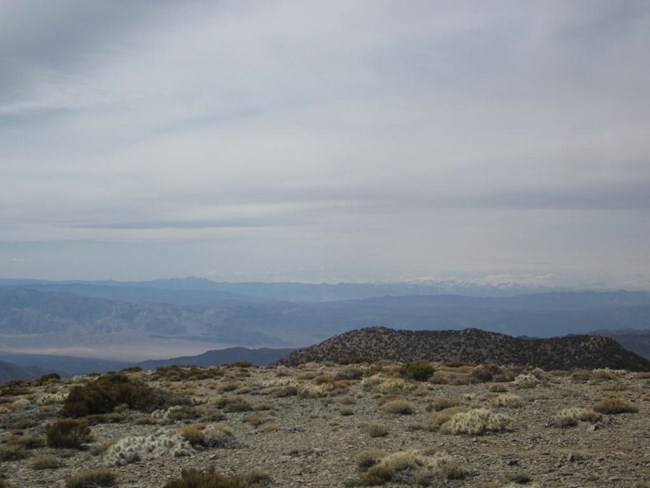
NPS - Dan Kish 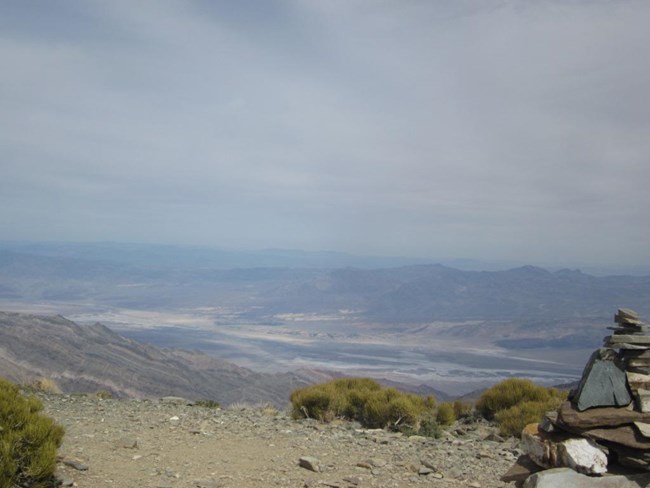
NPS - Dan Kish |
Last updated: February 6, 2020
